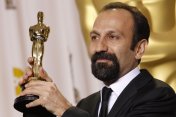It's the all important question during awards season - who is going home with the coveted Oscar for Best Picture at the 88th Academy Awards?
Fandor's Kevin B. Lee rounds out his Oscars series "Video Evidence" with a video essay that examines each Best Picture nominee, Spotlight, The Big Short, Bridge of Spies, Room, Mad Max: Fury Road, The Martian, Brooklyn, and The Revenant, then explores why he believes The Big Short should go home with the golden statue. Check it out below:
Here are the categories Lee puts each nominee in (which effectively pinpoints the trend that the Academy was leaning toward):
- Visually stunning survivalist stories (Mad Max: Fury Road, The Revenant, The Martian)
- Powerful dramas about women finding their way in the world (Room, Brooklyn)
- Films that turn social and political issues into gripping entertainment (Spotlight, The Big Short, Bridge of Spies)
Even though all of these films are deserving of the accolade, Lee chooses one that he believes should win due to the fact that it did the most to "change the way we see not just movies, but life." That movie is Adam McKay's The Big Short, an adaptation of Michael Lewis' non-fiction book about the collapse of the housing market and credit bubble of the mid-2000s.
Dealing with topics that are as complicated as high finance, as well as having a ton of key players and moving parts, is going to require very precise storytelling in order to explain the complex information to the audience without giving exposition heavy-handedly. However, The Big Short doesn't do that. It explains - a lot - everything. The entire movie is essentially one long exposition. But Lee argues that this method of providing information to an audience, something that wouldn't work for other films, works for The Big Short, because it's not like other films. It's what he calls an "essay film".
The Essay Film
Films that use experimental techniques to explore stories and topics in a critical and reflective way.
What's the difference between an essay film and every other film? Lee says that while other movies try to put you and keep you inside a fantasy, essay films try to "wake you up". They do this in a number of ways, whether it's through cinematography, editing, or some other cinematic medium, but The Big Short uses quite a few techniques to make its audience uncomfortable or aware.
- Awkward camerawork, timing, and edits
- Unconventional or inappropriate music and/or foley
- Freeze-frames and voiceovers
- 4th wall breaks by celebrities
And all of these things are used to overstimulate the viewer, or as Lee describes it, "an aesthetic of overstimulation producing an agitated zone of awareness." This keeps the audience on its toes instead of lulled into an escapist dream like cinema's traditional modus operandi. Why? Because essay films' primary goal is to inform, not entertain.
What do you think of cinematic techniques used in The Big Short? Which film do you think deserves to win Best Picture? Let us know down in the comments!









